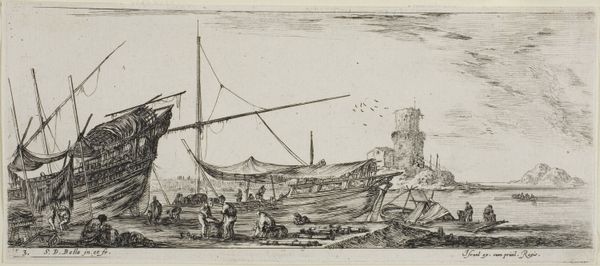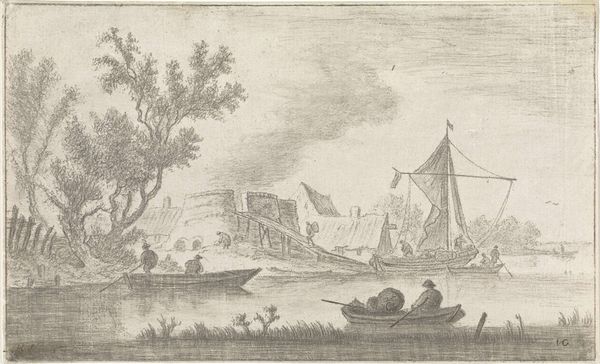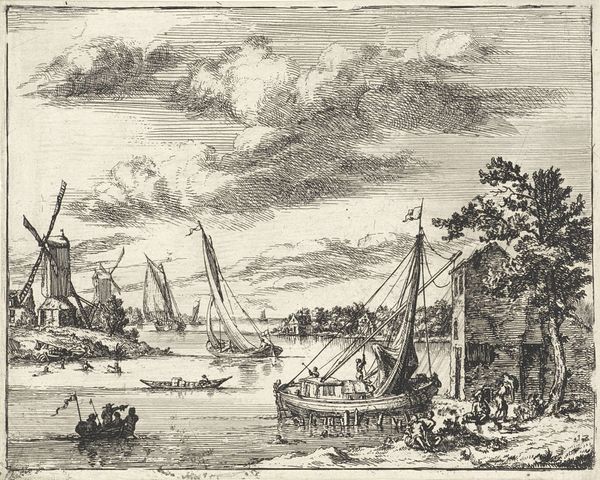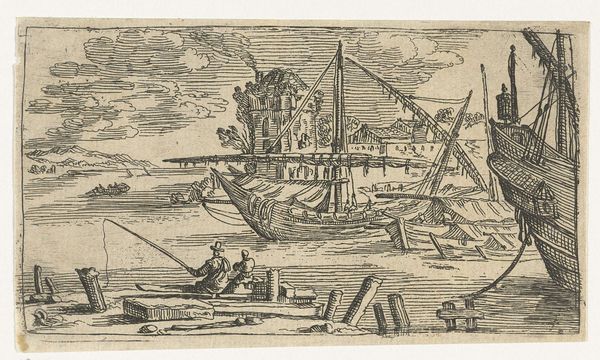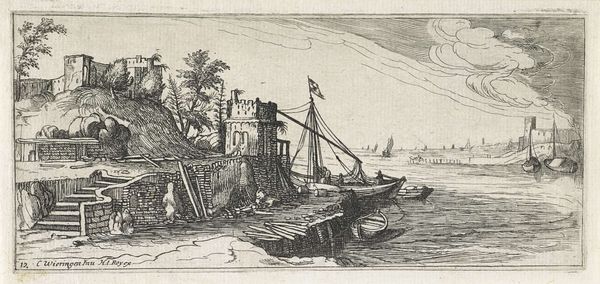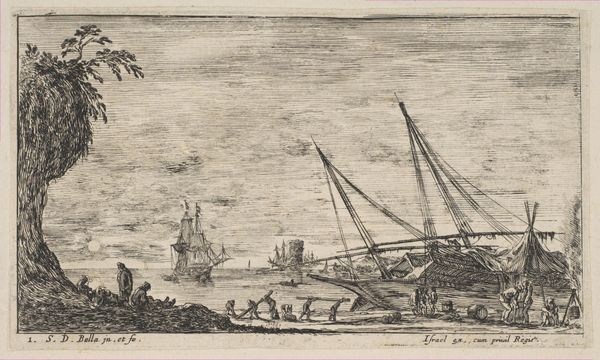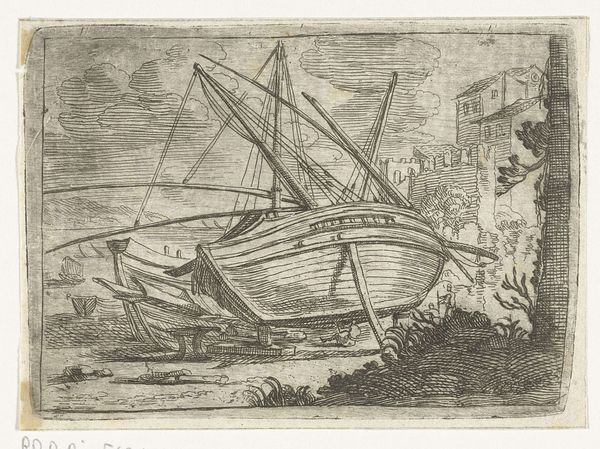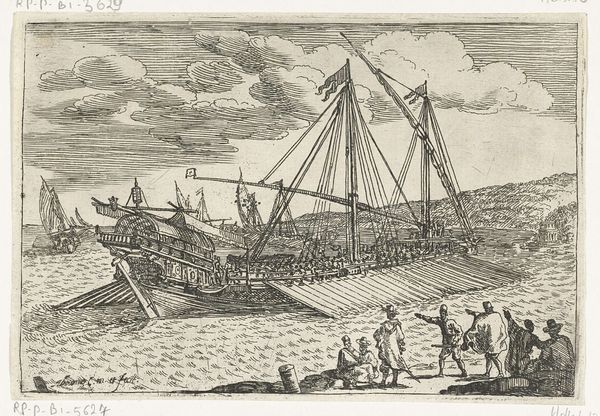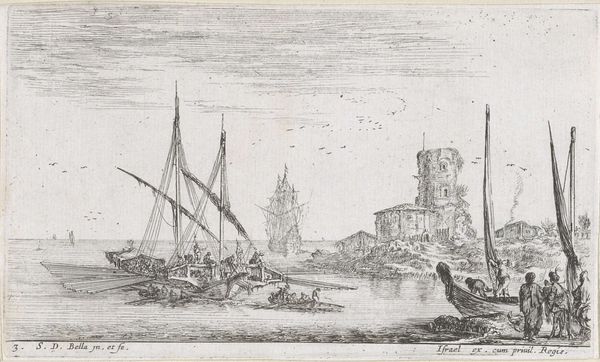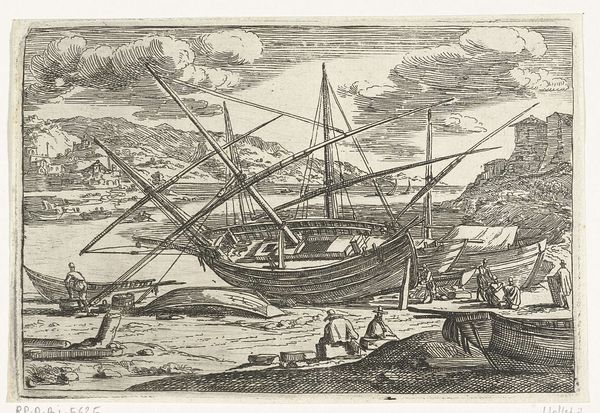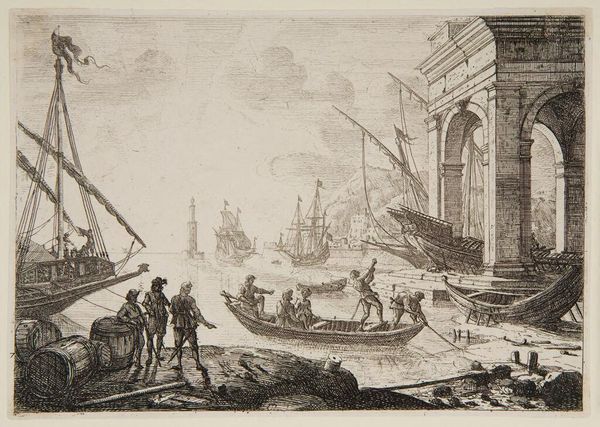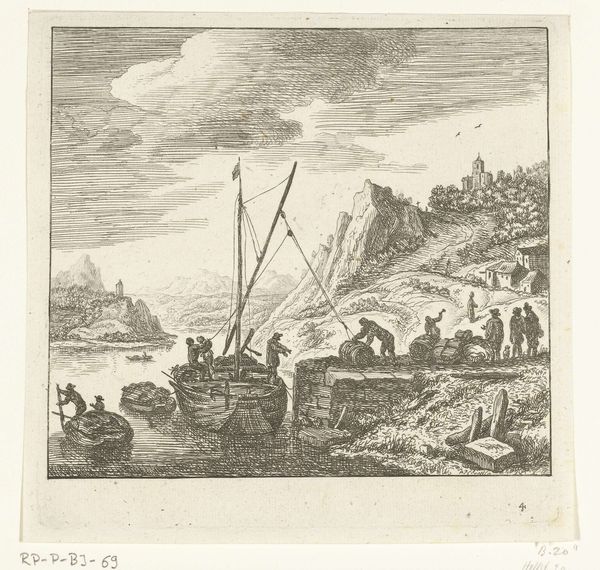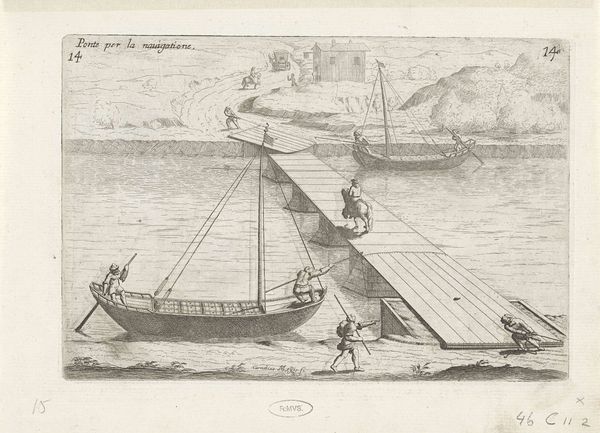
print, engraving
#
baroque
# print
#
landscape
#
cityscape
#
engraving
Dimensions: height 130 mm, width 188 mm
Copyright: Rijks Museum: Open Domain
Curator: This artwork by Abraham Casembroot, dating from sometime between 1603 and 1658, is titled "Galei voor anker bij de haven van Messina"—"Galleys Anchored at the Port of Messina." It's an engraving, a style he employed frequently. Editor: It has such a delicate quality, almost dreamlike. The details, despite the monochromatic nature of the print, are incredible. It gives the impression of bustling activity contained within a serene harbor. What strikes me most is that contrast. Curator: Precisely. Casembroot captured that vibrancy well, didn’t he? He gives us a glimpse into 17th-century Messina, a vital port at the time. The city acts as both the background and an integral character in the scene. You see the architectural markers: a sturdy watchtower, the suggestion of imposing religious buildings, defensive structures lining the mountainous shore. The whole image screams mercantile power, literally on guard against the uncertainties of the open water! Editor: Absolutely! And there’s something to be said about who gets to have that power. It’s striking how class is performed and embodied through clothing, spatial arrangements, and in that implied access to sea travel. I mean, the ship isn't simply a method of trade, but rather it embodies global power dynamics within an intersectional perspective, reflecting access based on class and colonial hierarchies. Curator: Very astute. I see how the harbor also functions as a microcosm of society itself. The way the figures on the docks interact, the laborers loading cargo. Do you find this piece speaking to notions of belonging and displacement inherent in port cities? Editor: The ship could almost function as a metaphor for the larger systems at play at this moment, and for whom it brings refuge or disruption, all at the same time. The print acts as an artifact of those entangled social and political layers. Curator: And from an aesthetic point of view, it pulls me in. Editor: Yes, as the image invites deeper inquiry and dialogue surrounding power and access. Curator: So, the image remains as resonant now as I’m sure it was back then.
Comments
No comments
Be the first to comment and join the conversation on the ultimate creative platform.
